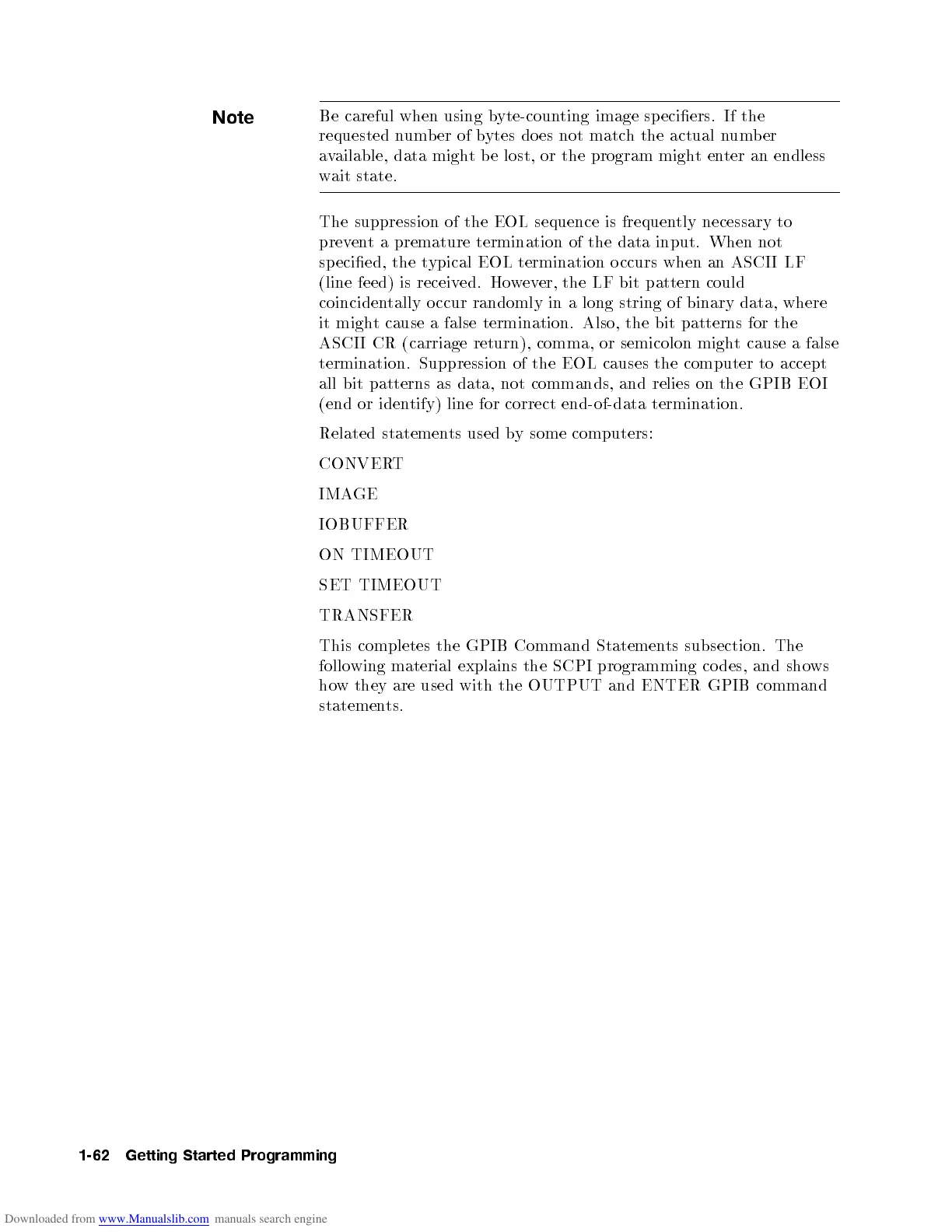Note
Be careful when using byte-counting image speciers. If the
requested number of bytes does not match the actual number
available, data might be lost, or the program mightenter an endless
wait state.
The suppression of the EOL sequence is frequently necessary to
prevent a premature termination of the data input. When not
specied, the typical EOL termination o ccurs when an ASCII LF
(line feed) is received. However, the LF bit pattern could
coincidentally o ccur randomly in a long string of binary data, where
it might cause a false termination. Also, the bit patterns for the
ASCII CR (carriage return), comma, or semicolon might cause a false
termination. Suppression of the EOL causes the computer to accept
all bit patterns as data, not commands, and relies on the GPIB EOI
(end or identify) line for correct end-of-data termination.
Related statements used by some computers:
CONVERT
IMAGE
IOBUFFER
ON TIMEOUT
SET TIMEOUT
TRANSFER
This completes the GPIB Command Statements subsection. The
following material explains the SCPI programming co des, and sho
ws
how they are used with the OUTPUT and ENTER GPIB command
statements.
1-62 Getting Started Programming
